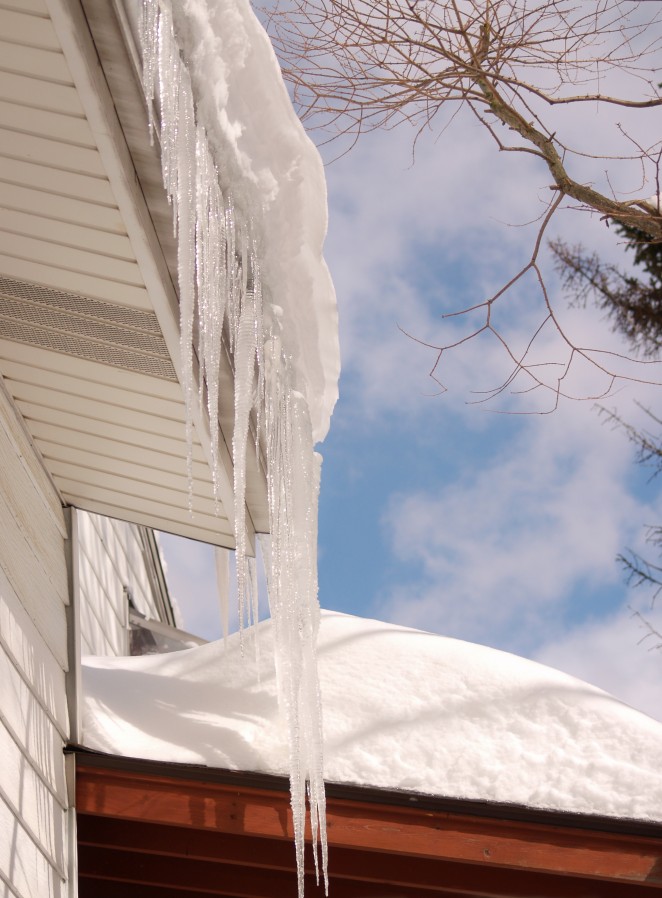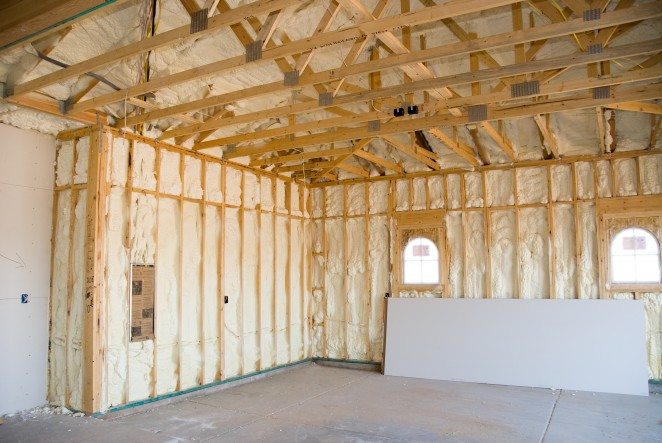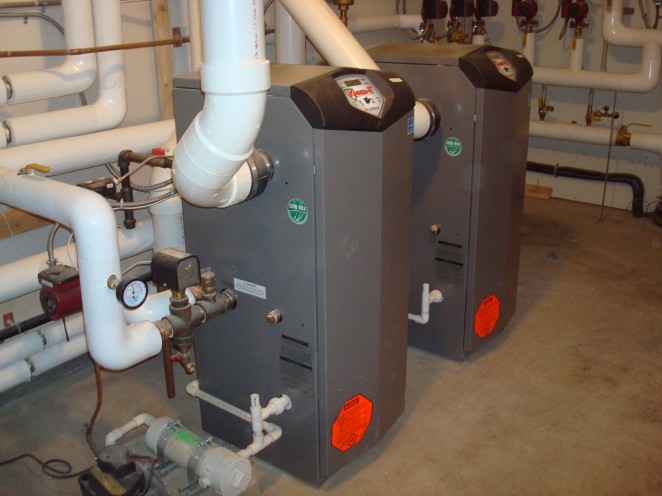Ice Dams
 Ice dams are a major cause for leaking and interior ceiling damage. It is typical a problem on slopped roofs in colder climates. They form when accumulated snow on roofs melt and flow down the roof eventually freezing when temperatures drop during the day or over night. The freezing of the melted snow builds up and extends from the gutters up the roof, eventually finding its way underneath the shingles. As the ice starts to melt again it leaks into the attic and through the ceiling below.
Ice dams are a major cause for leaking and interior ceiling damage. It is typical a problem on slopped roofs in colder climates. They form when accumulated snow on roofs melt and flow down the roof eventually freezing when temperatures drop during the day or over night. The freezing of the melted snow builds up and extends from the gutters up the roof, eventually finding its way underneath the shingles. As the ice starts to melt again it leaks into the attic and through the ceiling below.
The melting of snow typically comes from two reasons:
- Inadequate roof/ceiling insulation causing heat to leak through the living space and into the attic.
- Inadequate ventilation of the attic itself – attics should be as cold as the temperature outside.
In addition to the common reasons mentioned above the snow also will melt on a sunny day causing the melted snow to freeze on cold nights.
Ice dams can be avoided by some of the following measures:
- In new construction, ice dams are prevented through building designs with adequate roof insulation and ventilation.
- Snow removal with a roof rake will eliminate the build up of snow and decrease the potential of melting and freezing.
- Building steeper roofs to allow for snow to shed off more easily.
- Ice and water shield (rubber membrane) installed under a new roof can help keep melted water from coming into the home.
- Heat wire run on the perimeter of the roof can help melt the snow before it freezes up the roof line during storms.
Weatherization
 Weatherizing your home can help a tremendous amount on protecting the structure and lowering your operational costs for heating and cooling. Essentially, weatherization protects the homes interior from the elements – sunlight, precipitation and wind. This is different than insulating a home, although they can go hand-in-hand.
Weatherizing your home can help a tremendous amount on protecting the structure and lowering your operational costs for heating and cooling. Essentially, weatherization protects the homes interior from the elements – sunlight, precipitation and wind. This is different than insulating a home, although they can go hand-in-hand.
Here in the US we use a tremendous amount of energy due to many reasons – the size of our homes, the number of bathrooms we have, the amount of heating and cooling required to condition the homes, the amount of electricity we use, etc. Therefore, any type of improvement to the envelope of the home can help reduce some of the energy we use.
Here are some of the ways we can weatherize you home:
- Sealing cracks and holes around windows, doors and mechanical components (wiring, piping, etc.) penetrating unconditioned areas.
- Sealing around recessed lighting fixtures to avoid heat loss into unconditioned areas.
- Sealing and insulating heating and air conditioning ducts, which can account for at least 20% of heat loss in a home.
- Installing or replacing back-draft dampers in exhaust ducts for dryers or bathroom vents to avoid unconditioned air coming back in to home.
- Maintenance of plumbing and heating appliances and piping to avoid catch corrosion or leaks.
- Installing proper gutters and perimeter drains to eliminate water getting into a basement or crawlspace
- Properly ventilating attic spaces to eliminate ice dams or moisture issues from humidity.
- Installing insulation around all exterior penetrations of the home.
- Replacing old drafty doors with new tightly sealed, insulated-core doors.
- Replacing older windows with low-energy, double-glazed windows.
Heating System Upgrade
 Todays technology allows us to install extremely high-efficiency heating systems for our homes. The average heating system today can range from 60-75% Annual Fuel Utilization Efficiency (AFUE), with replacement heating systems offering AFUE’s of up to 98%. That can reflect a fuel savings of 30-40% drastically reducing your heating bills. In addition, there are rebates available through utility programs that could be as high as $ 1,900.00.
Todays technology allows us to install extremely high-efficiency heating systems for our homes. The average heating system today can range from 60-75% Annual Fuel Utilization Efficiency (AFUE), with replacement heating systems offering AFUE’s of up to 98%. That can reflect a fuel savings of 30-40% drastically reducing your heating bills. In addition, there are rebates available through utility programs that could be as high as $ 1,900.00.
